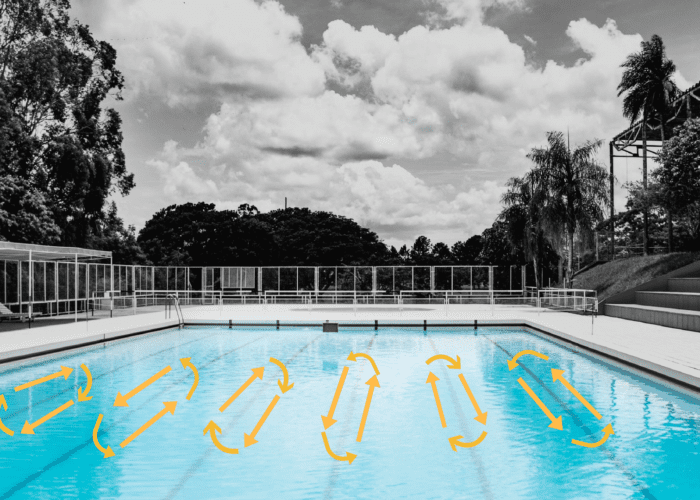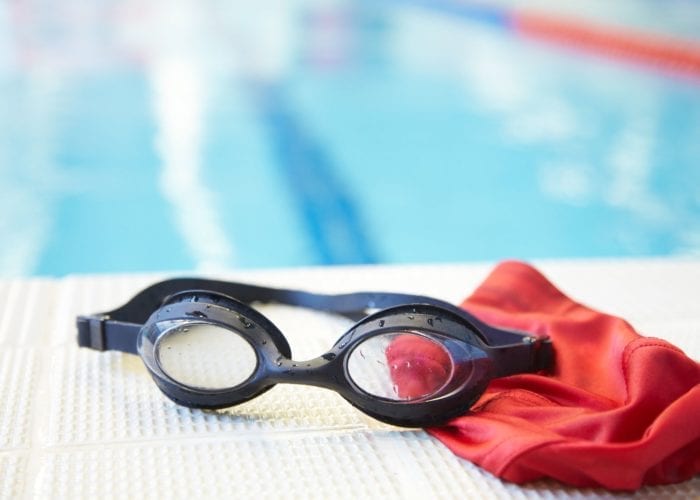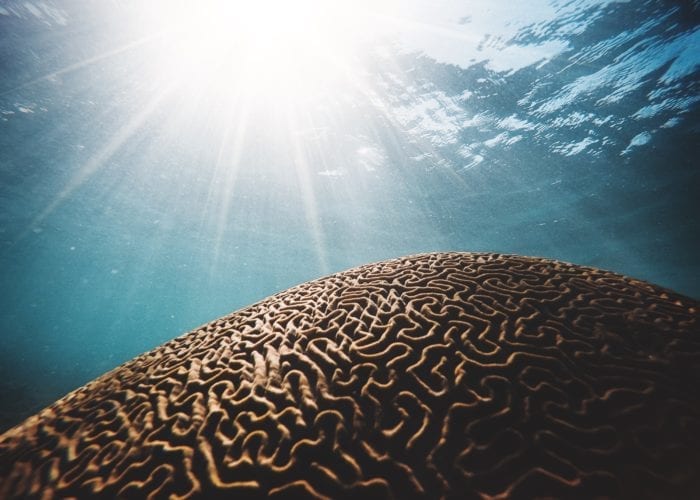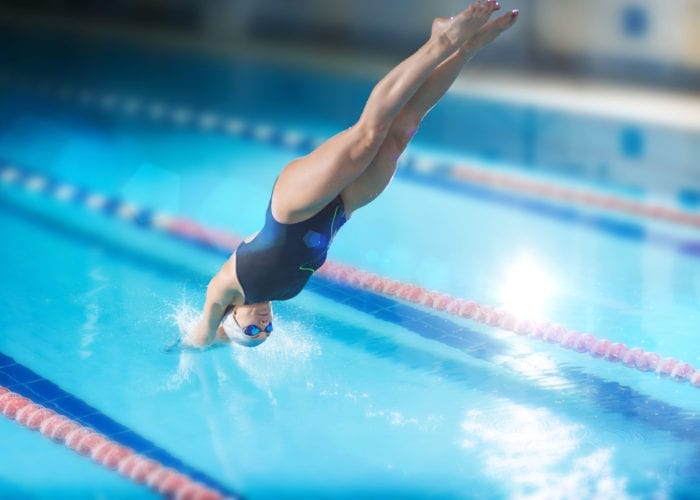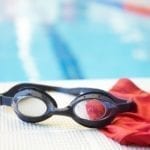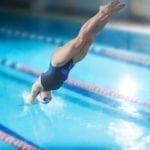One of the basic swimming skill is correct breathing. Learn this art before you actually learn to swim, you can start at home. Many people say they can swim, but the difference is when you swim with your head above water or you exhaling into the water. Let’s take a look at how to exhale into the water and overcome the unpleasant feelings associated with it. Finally, you will find it is not such a horrible thing.
Four breathing rules
1. Relax your muscles
Stand straight, feet on shoulder width, arms relaxed along the body. Start with a feeling of your breathing. Try to expand it. Inhale and hold it for 1 to 2 seconds in your lungs. You should feel a slight pressure in the abdomen and neck area. When exhaling, relax all muscles and let your chest naturally exhale a volume of your lungs. As soon as you get to the point where you have to push another air out of yourself, it is time to stop the exhaling. Take a break for 1 – 2 seconds, then inhale again. All muscles are relaxed. Repeat 10 times.
2. Inhale strongly
When swimming, you have to breathe consciously (you have to think about it) and only after a certain period of time you will more automatically without having to pay a lot of attention. Focus on the depth of inhaling, breathe strongly (about 1 second inhale) and let the exhale work without effort. Active strong inhale, relaxed exhale.
The difference between inhale-exhale on the ground and in the water is quite big. When you exercise on the ground, you don’t have to think about breathing. It’s usually autonomous and not difficult. On the other hand, when swimming, you have to actively think about it, until it becomes autonomous, too.
Always use your mouth to inhale. Exhale once with nose and once with the mouth. Perceive the difference between exhaling times with your nose and mouth, before we get to inhale-exhale into the water.
3. Don’t push the exhale
The most important part of swimming is, in my opinion, the exhale. The best way to do it is by your nose and mouth at the same time, but there is a variety of that, it depends on what you actually exercising or practising. Try to exhale to the water at home using the exercise described in the section below.
Exhaled air is accelerated by the pressure of water on your chest (if you are in the pool completely) and natural pressure of muscles, so there is no need to force the exhale or holding it back, let it go naturally.
An exception can occur in people who have a strained throat, for example, by fear of water. Muscle tension (fear) has an effect on the exhale and holding it back. If this is the case, initially, exhale have to be done with the higher effort to push it through the throat and actually fully exhale.
4. Watch your reactions
When doing inhale/exhale to the water, you have to perceive and feel every reaction your body giving you. If you feel you need to exhale more, try to do it more. If you think you need more air, do inhale more strongly.
If it’s not fluent and you stuck in some part of breathing, try to make it as fluent as possible. You have to feel comfortable because when you will swim, later on, there are a lot more things to do, so you should feel good about breathing. If your head starts to spin, slow down, don’t overdo it.
Practice breathing at home
Here’s a brief tutorial on how to learn inhale-exhale at home. Get the basic concept of it. Just do it.


1. Prepare some stuff
Fill the vessel or sink with a chilly water. A vessel can be placed on the table. Stand in front of a vessel or sink and start with the deep and slow breathing when standing (described above).
2. Get close to the surface
Approach the water to approx. 5 cm above to a water surface. Exhale with your nose into the surface. Continue with smooth breathing. Start to get lower to the surface to 1-2 cm. You can see the little waves on the surface from your exhale.
3. Nose in the water
Start breathing while dipping your nose slightly under the surface. Make bubbles and slowly lift the head, when your exhale going to the end. Lift the head only about 2-3 cm above the surface, strongly inhale with your mouth and repeat the exhale into the water with the nose. Twenty times, no interruption.
4. Face in the water
When exhaling, immerse your entire face. While exhaling with your nose and bubbling in the water, immerse your face and nose deeper so half of your head is below the surface. Repeat twenty times without interruption.
Underwater your eyes are closed (optionally, you can open them or use swimming goggles) and do not touch your face in any way, just let the water run away when you lift your head.
5. Exhale with the mouth
There should be a strong bubbling now. Start exhaling with your nose and immediately add the exhale with your mouth and exhale the bubbles simultaneously with your nose. Now the exhale will be faster. Lift your head again, inhale with your mouth and repeat everything smoothly twenty times. No interruptions.
6. Repeat and master it
Repeat the exercise every day. You should automatically exhale through your nose and mouth into the water and inhale just with your mouth. All smoothly, without stopping, with a good feeling, no face touching.
Other tips
- While showering, stand under the shower stream and allow the water to run over the head and face. Look at your legs. Try to breathe smoothly – inhale with the mouth, exhale through your nose, even though water flows over your face, don’t touch your face with hands.
- Hold your air in the lungs for 1 minute or more and do not let the air go into your mouth. Imagine you want to swallow the air.
- Try to open your eyes under the water in a sink or basin. Do this exercise in chilly water. Don’t touch your face with your hands.
